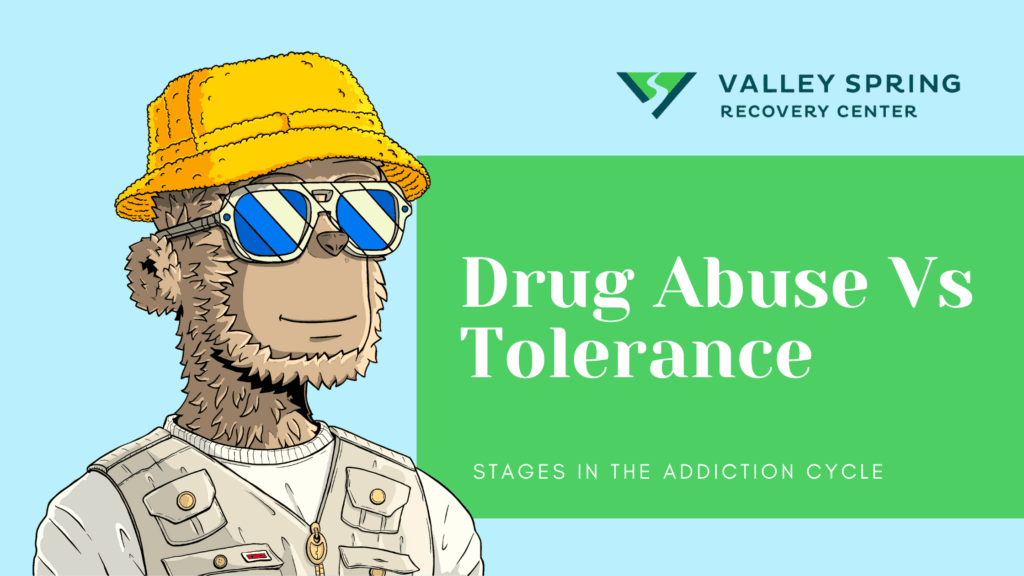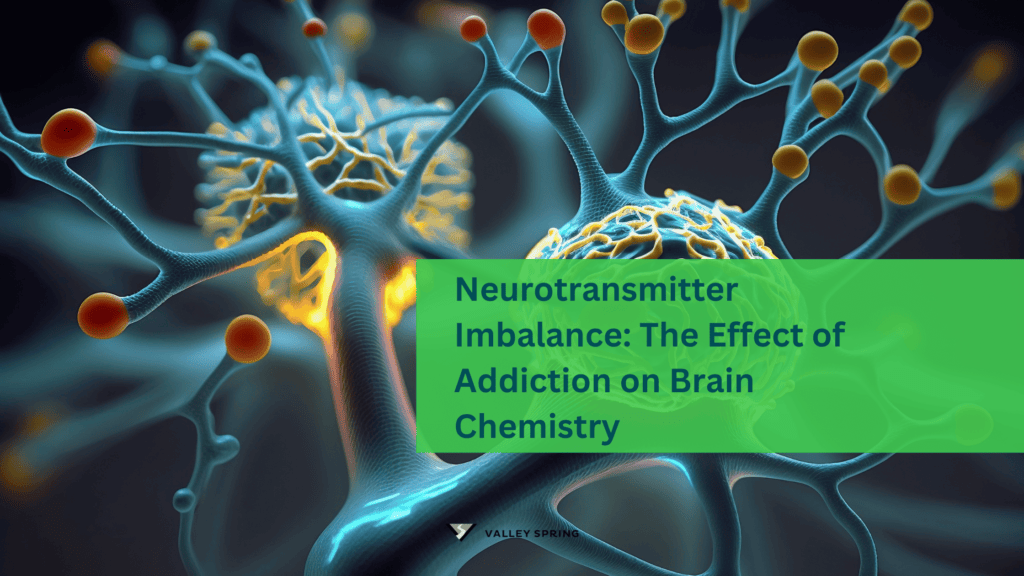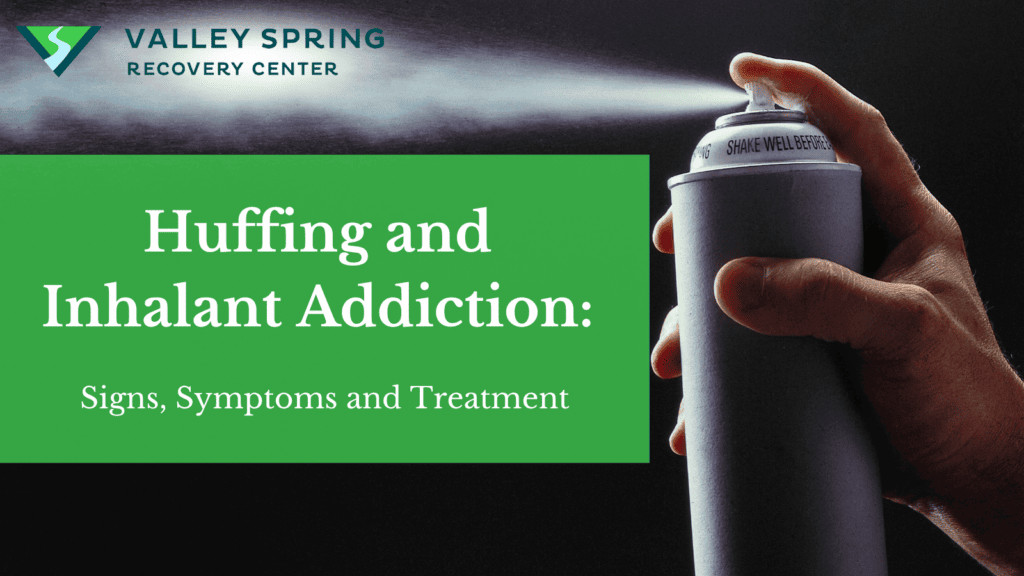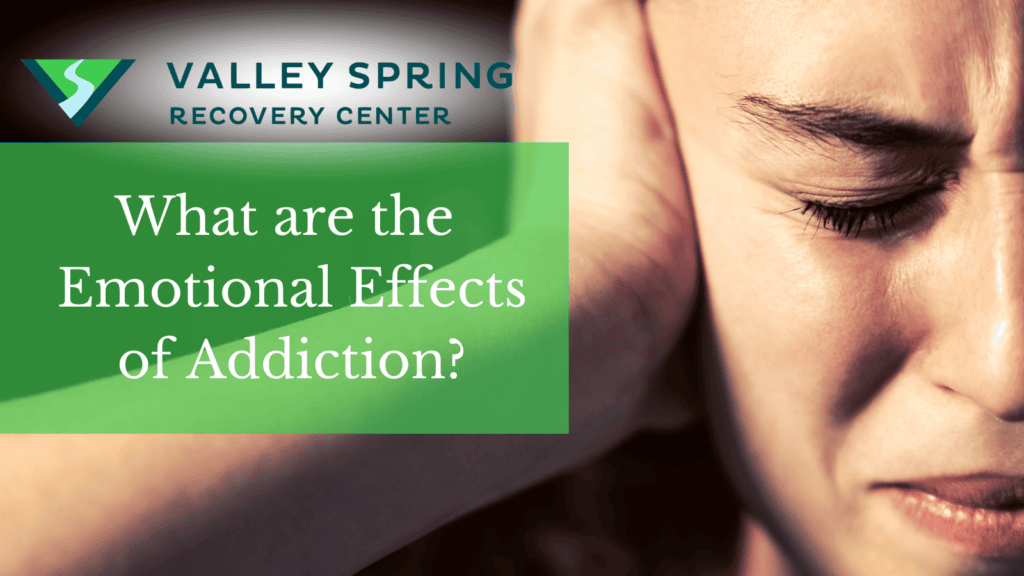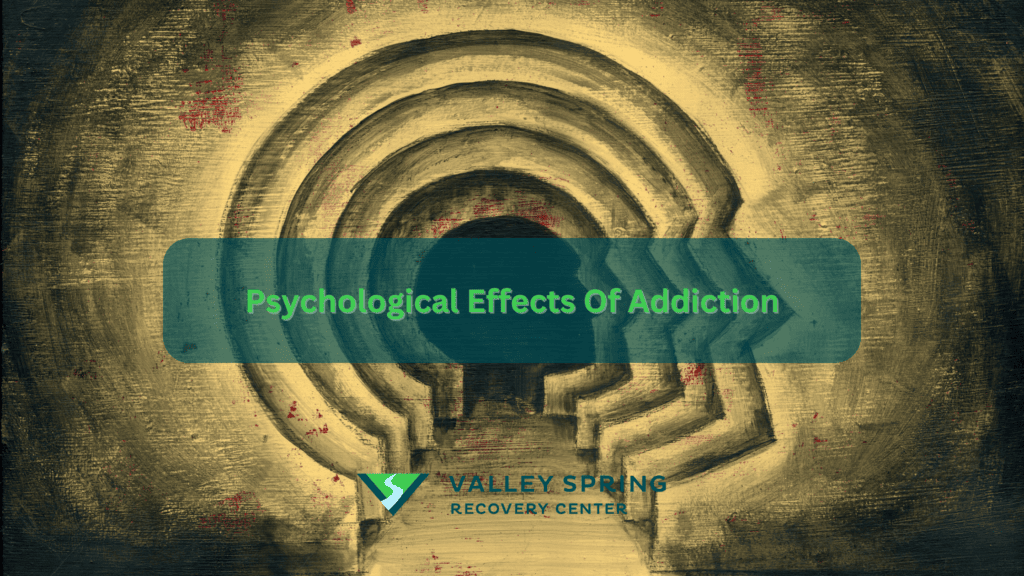Drug addiction is a chronic disease characterized by drug seeking and use that is compulsive, or difficult to control, despite harmful consequences. Yet the road to addiction has many steps including experimentation, drug abuse, tolerance and dependence, addiction, recovery, and relapse, all of which are distinct conditions with varying symptoms.
Many drugs impact the brain’s reward system by saturating it with dopamine, a neurotransmitter. Elevated dopamine levels in this circuit promote the repetition of enjoyable yet harmful activities, encouraging individuals to engage in high-risk behavior repeatedly.
Chronic drug abuse leads the brain to adapt to elevated dopamine levels, diminishing the euphoria the individual experiences compared to their initial use of the substance—this phenomenon is termed tolerance. To chase the original high, the person may increase their dosage, as supported by information from NIDA, Drug Facts, and WebMD.
What is Drug Abuse?
Drug abuse refers to the harmful or excessive use of substances for non-medical purposes. Drug abusers use substances excessively and in a manner that is harmful to them, both physically and mentally. A drug abuser is usually not physically addicted at this stage and still has the opportunity to stop using more easily compared to an individual already physically dependent on drugs.
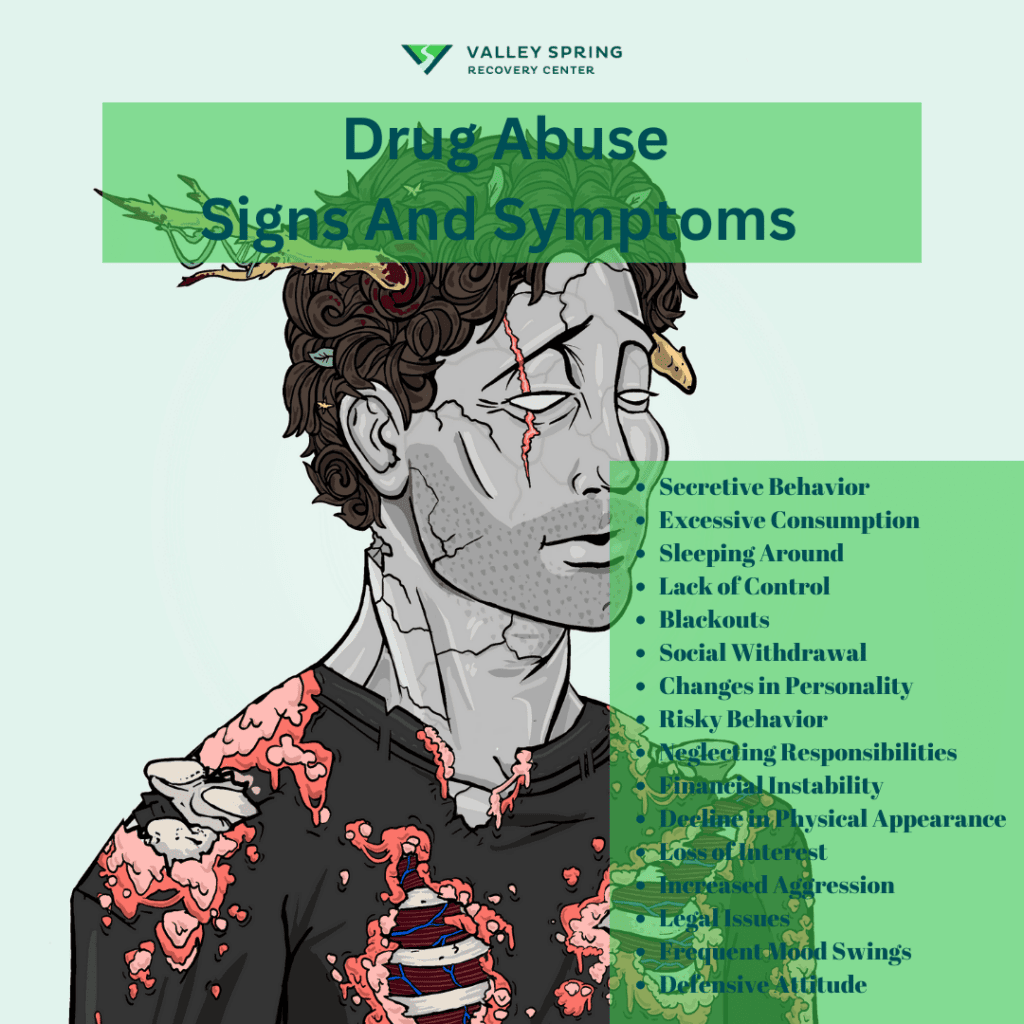
What Are the Signs and Symptoms of Drug Abuse?
The common signs and symptoms of drug abuse include altered sleep patterns, excessive spending on drugs, and changes in physical health and appearance and the abuser may experience some negative consequences from their risky behavior.
Drug abuse can also result in various behavioral changes such as:
- Secretive Behavior: Concealing activities or being evasive about whereabouts.
- Excessive Consumption: Using substances in increasingly larger amounts.
- Sleeping Around: Engaging in promiscuous or risky sexual behavior.
- Lack of Control: Inability to reduce or stop substance use despite wanting to.
- Blackouts: Experiencing periods of memory loss or unexplained time gaps.
- Social Withdrawal: Isolating oneself from friends, family, and social activities.
- Changes in Personality: Noticeable shifts in mood, attitude, or behavior.
- Risky Behavior: Taking unnecessary risks, including dangerous driving or unprotected sex.
- Neglecting Responsibilities: Failing to fulfill work, school, or household duties.
- Financial Instability: Unexplained lack of money or frequent borrowing.
- Decline in Physical Appearance: Neglecting personal hygiene and grooming.
- Loss of Interest: Lack of engagement in previously enjoyed activities.
- Increased Aggression: Quick to anger, irritability, or violent tendencies.
- Legal Issues: Arrests or other legal problems stemming from drug use.
- Frequent Mood Swings: Unpredictable emotional states.
- Defensive Attitude: Being overly secretive or defensive when questioned about substance use.
These changes can be observed as a person develops drug dependence or addiction and may serve as warning signs to seek help.
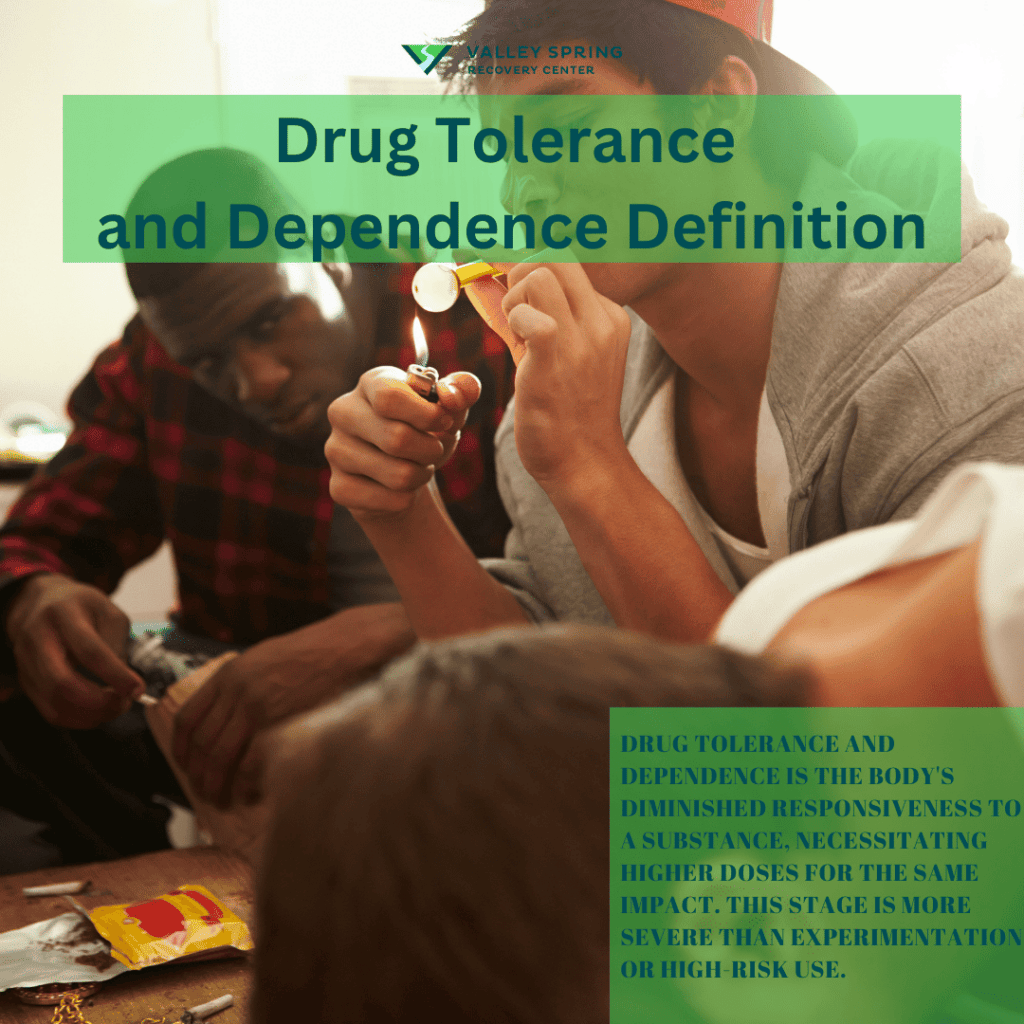
What Is Drug Tolerance And Dependence?
Drug tolerance and dependence is the body’s diminished responsiveness to a substance, necessitating higher doses for the same impact. Dependence signifies a reliance on a specific substance for daily functioning and well-being. Understanding the difference between these two states is crucial for individuals grappling with drug issues, as it informs the selection of the most effective treatment strategy.
Drug-tolerant and dependent individuals experience withdrawal symptoms when they are not using the drug which further exacerbates the cycle of use, eventually leading to a more severe addiction.
What Are The Symptoms Of Drug Dependence and Tolerance?
Symptoms of drug dependence and tolerance include the need for higher doses of the drug and experiencing withdrawal symptoms when stopping. For example, someone who smokes cigarettes regularly and experiences physical and psychological withdrawal symptoms when attempting to cease use can be considered drug-dependent.
If symptoms of drug tolerance and dependence are noticed in an individual, it’s imperative to get relevant help and support for effective drug use management. There are resources available to provide the necessary help and guidance in addressing drug dependence and tolerance.
What Are The Reasons for the Development of Drug Tolerance?
Drug tolerance arises when the body’s responsiveness to a substance decreases due to repeated or extended exposure. This requires escalating doses to achieve the same effects. Factors contributing to drug tolerance include:
- Diminished drug response from prolonged exposure
- Activation of the mesolimbic dopamine system
- Genetic predispositions or alterations
- Changes in receptor density to which the drug binds
The dosage and frequency of drug use can accelerate the development of tolerance. Consistent and prolonged drug use, coupled with escalating doses, can lead to diminished drug efficacy over time.
What Are The Risks Associated with Drug Tolerance?
The risks of drug tolerance include the high probability of progression to addiction as well as exacerbation of preexisting medical conditions, and a heightened risk of overdose. Tolerance develops because of brain changes caused by drug use, making it challenging to regulate usage. Physical withdrawal symptoms from drug dependence can be severe, even fatal, if not managed under medical supervision.
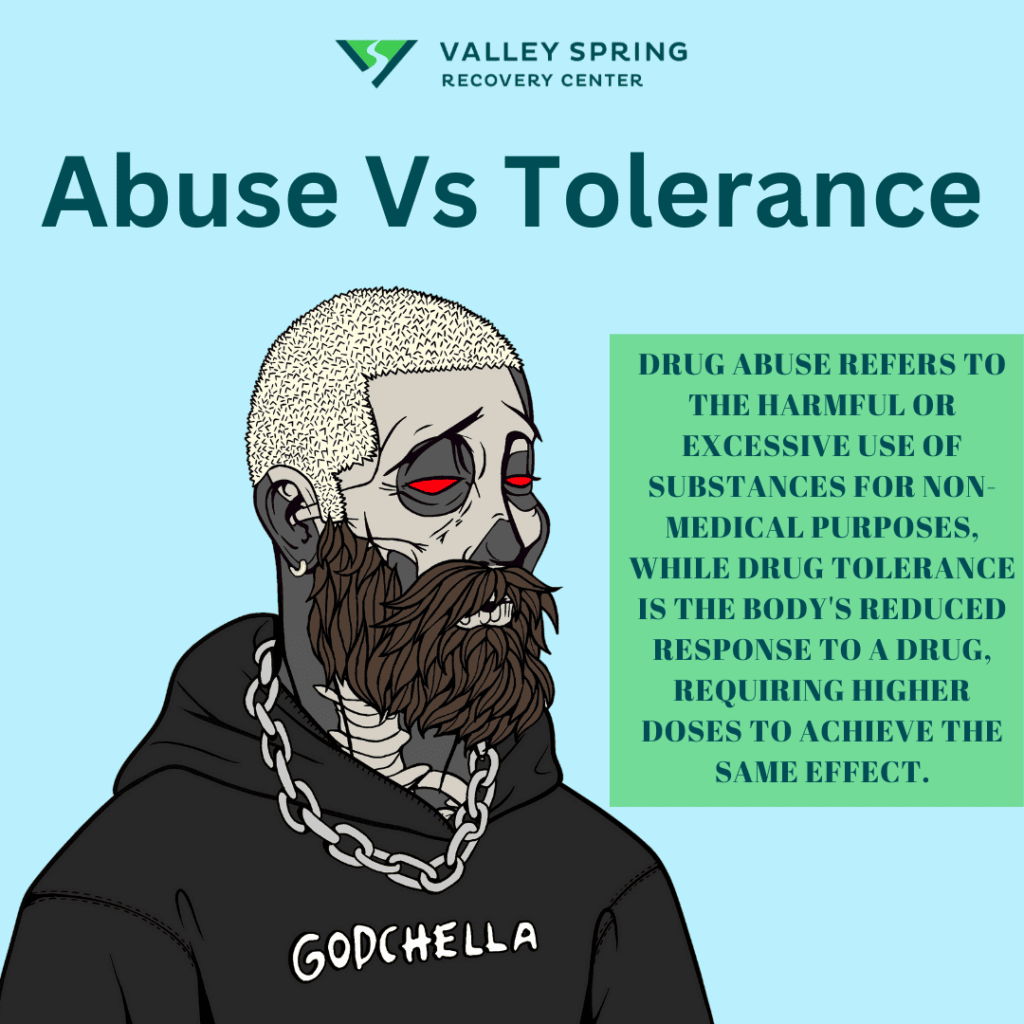
What Is the difference between Drug Abuse vs Drug Tolerance and dependence?
Drug abuse refers to the harmful or excessive use of substances for non-medical purposes, while drug tolerance is the body’s reduced response to a drug, requiring higher doses to achieve the same effect. The main feature of drug tolerance and dependence is the body’s adaption to the drug requiring higher doses to achieve the same effect, coupled with withdrawal symptoms when the drug use ceases.
A person can abuse a specific drug or substance without being tolerant to it or addicted to it. The more someone abuses drugs the higher the likelihood of Brain changes that occur over time with drug use challenging an addicted person’s self-control and interfering with their ability to resist intense urges to take drugs which results in tolerance and eventually addiction. This is why drug addiction is also a relapsing disease according to a 2018 study by NIDA.
Drug abuse can catalyze the development of both tolerance and dependence. As drug abuse persists, the body becomes desensitized to the drug’s effects, requiring higher doses, and potentially leading to dependence and addiction.
Different drugs have varying mechanisms that contribute to tolerance, influenced by pharmacokinetics and pharmacodynamics.

What drugs create physical dependence the fastest?
The rate at which physical dependence develops can vary widely depending on the drug, the dosage, frequency of use, and individual physiological factors. However, some substances are generally considered to create physical dependence more quickly than others:
1. Opioids
Drugs like heroin, morphine, and prescription painkillers like OxyContin can lead to physical dependence in a matter of weeks or even days with frequent use.
2. Benzodiazepines
Medications like Xanax, Valium, and Ativan used for treating anxiety and sleep disorders can also create rapid physical dependence.
3. Stimulants
While generally slower to create physical dependence compared to opioids and benzodiazepines, stimulants like cocaine and methamphetamine can still lead to a state of dependency when used heavily.
4. Alcohol
Although commonly consumed, alcohol can lead to physical dependence relatively quickly, especially with frequent and high-volume consumption.
5. Nicotine
Found in tobacco products, nicotine can lead to physical dependence within days to weeks of regular use.
At what stage in the addiction cycle do physical withdrawal symptoms develop?
Physical withdrawal symptoms develop during the tolerance and physical dependence stage of the addiction cycle. This is a critical phase where the body has adapted to the consistent presence of a substance and, as a result, requires increasing amounts to achieve the same effects—this is known as tolerance. Concurrently, physical dependence sets in, making the substance necessary for normal functioning and corresponding withdrawal symptoms when the substance is not in the dependent person’s system. Withdrawal symptoms are usually not present during the drug abuse stage of the addiction cycle.
Which is an example of drug tolerance?
An example of drug tolerance is an individual who experiments with prescription painkillers and takes them recreationally 2 or 3 times a week in excess which eventually leads to using the drug every day at an increased rate with a higher dosage because the old amount does not achieve the same high from the drug. Drug tolerance occurs when repeated use of a drug leads to a decreased response, meaning higher doses are needed to produce the same effect. This is common with opioid painkillers and substances like morphine and alcohol.
How does drug abuse lead to tolerance?
Drug abuse can lead to more frequent use which perpetuates tolerance as the body builds up a resistance to the effects of the drug, requiring more of it to achieve the same result. Addiction occurs when a high tolerance is developed and use persists despite the negative consequences of the addiction to drugs or alcohol. The behavioral aspects lead to higher risk use which eventually leads to tolerance in the person’s body necessitating a higher dose which eventually progresses to addiction.
Valley Spring Recovery Center is a boutique substance use disorder treatment provider with licensed psychiatrists and counselors standing by ready to help. Our help line is available 24/7.
What Are The Different Stages Of Addiction?
The different stages of addiction include:
- Drug Experimentation: Refers to the initial, often casual, use of a substance out of curiosity or for recreational purposes, without the intent of regular or long-term use.
- Abuse: Characterized by excessive use and risky behaviors when intoxicated by drugs or alcohol.
- Tolerance: Acclimation of the body to a substance, requiring increased doses to achieve the same effect.
- Addiction: Compulsive drug use despite adverse consequences.
- Recovery: The process of regaining physical and mental health, usually through cessation of substance use, therapy, and lifestyle changes, aimed at long-term abstinence and well-being.
- Relapse: The recurrence of symptoms or behaviors associated with addiction, leading to a return to substance use after a period of improvement or abstinence.
Addiction is a complex and chronic disease that affects the brain and influences a person’s ability to control their drug use, often leading to serious consequences and a variety of challenges.
Grasping the diverse stages of addiction is vital in tackling the challenges encountered by those battling addiction and seeking assistance. It provides a framework for recognizing the progression of addiction and identifying the most appropriate treatment and support resources at each stage.
Drug Experimentation
Drug experimentation is the initial stage of trying drugs, often driven by curiosity, boredom, or peer pressure. Adolescents and young adults aged 12 to 25 are most likely to experiment with drugs. The most commonly abused drugs among first-time users are:
Alcohol
Marijuana
Cocaine
Prescription drugs, particularly painkillers
Peer pressure can significantly influence drug experimentation, as some individuals may feel compelled to try drugs to conform with their peers or gain approval among their social group. Recognizing the influence of peer pressure and educating individuals to make informed and independent decisions about drug usage is significant.
Drug Abuse
Drug abuse is the excessive and harmful use of drugs, often leading to negative consequences such as interrupted sleep patterns, spending excessive money on drugs, and changes in physical health and appearance. Drug abuse can have varying effects depending on the individual’s age group, with older adults being more sensitive to drugs and younger age groups being more likely to engage in drug abuse.
The impact of drug abuse on mental health can be significant, potentially leading to depression, anxiety, and psychosis. Furthermore, drug abuse can exacerbate pre-existing mental health issues and make them more challenging to manage, emphasizing the importance of seeking assistance and support for both substance abuse and mental health issues to attain overall well-being.
Drug Dependence
Drug dependence is a condition in which a person’s reliance on a substance becomes so strong that they cannot function without it, often experiencing physical symptoms when the substance is not available. Drug dependence can be either physical or psychological, with physical dependence marked by tolerance and withdrawal symptoms and psychological dependence characterized by cravings and compulsive drug-seeking behavior.
Drug dependence develops over time due to the changes that drugs cause in the brain, making it increasingly difficult for individuals to regulate their drug use. As a person continues to abuse drugs, their body becomes accustomed to the drug’s presence, requiring higher doses to achieve the same effect and potentially leading to dependence and addiction.
Drug Addiction
Drug addiction results in an inability to fight the urge to use certain substances. This usage continues despite of suffering serious consequences. It is a chronic neurological disorder that can be managed through treatment but has no definitive cure.
The negative effects of addiction can range from physical ailments to strained interpersonal relationships and diminished job performance. Seeking treatment for drug addiction is essential to surmount dependency and avert adverse outcomes, and various treatment options are available to help individuals overcome their struggles and regain control of their lives.
Recovery
Recovery is the process of overcoming addiction and maintaining sobriety. The stages of recovery in drug addiction generally include:
Abstinence: Individuals cease using drugs and concentrate on detoxification.
Repair: They strive to address the physical, emotional, and psychological damage caused by addiction.
Growth: Individuals cultivate new coping mechanisms, reestablish relationships, and construct a healthier lifestyle.
Relapse
Relapse is the return to drug use after a period of recovery. It can result from various factors, including:
Stress and negative emotions
Places and social circles that were previously associated with drug use
Social pressure
Overconfidence and complacency
Lack of support and coping skills
Triggers related to the substance itself
Co-occurring mental health disorders
Identifying the signs of a possible drug relapse is vital to avert setbacks and guarantee continued recovery progress. If a relapse occurs, it is essential for individuals to seek help and get back on track, as relapse is common but not a sign of failure. With the right support and resources, individuals can continue on their path to recovery and lead fulfilling lives free from addiction.
How Can You Get Treatment and Support for Drug-Related Issues?
Treatment and support for drug-related issues can be found through various options, such as inpatient and outpatient treatment programs, therapy, and support groups. Remember, each person’s needs and circumstances are unique, hence finding a suitable treatment approach is crucial for successfully overcoming addiction.
Health care providers, such as mental health professionals including psychiatrists, psychologists, or licensed counselors, can provide valuable guidance in addressing drug addiction and the treatment of drug addiction. Support groups for individuals facing similar challenges can offer a sense of community and understanding, helping them navigate the journey to recovery together.
Through seeking assistance and support, individuals can undertake the required steps to surmount addiction and reclaim control over their lives.
What Are The Treatment Options For Drug Addiction?
Treatment options for drug addiction include psychotherapy, medications, or a combination of both, depending on the severity of the addiction and the type of drug abused. Psychotherapy, such as cognitive-behavioral therapy (CBT), can help individuals address the psychological aspects of addiction and develop healthy coping strategies. Medications can assist in managing withdrawal symptoms, cravings, and other dangerous behaviors linked to addiction, making the recovery process more manageable.
The selection of the most effective combination of psychotherapy and prescription medication for treating drug addiction is determined by a variety of factors, including:
The type of drug being abused
The individual’s medical history and requirements
The degree of the addiction
The presence of any co-occurring mental health disorders
A comprehensive and personalized approach to treatment is essential for achieving lasting recovery and improved well-being.
Finding the right support involves seeking help from professionals, such as psychiatrists, psychologists, or licensed counselors, and joining support groups for individuals facing similar challenges.
What is the difference between drug resistance and tolerance?
Drug tolerance is a decrease in response to a drug when used repeatedly, while resistance is the development of an ability to withstand a previously destructive effect of a drug. Examples of drugs that result in tolerance include alcohol and opioids.
What is the difference between drug addiction and drug dependence?
Drug addiction is an uncontrollable compulsion to seek out and use drugs, while drug dependence involves a physical or psychological reliance on the drug that causes withdrawal symptoms when stopped.
What is the difference between Drug Abuse and Drug Addiction?
Drug abuse and addiction, while closely related, represent different stages in the spectrum of substance use disorders. Drug abuse refers to the harmful or hazardous use of psychoactive substances, including alcohol and illicit drugs. This stage is characterized by the recurrent use of drugs to the extent that it leads to significant problems such as health issues, impaired functioning, or legal troubles. However, at this stage, the individual may still have a certain degree of control over their substance use. In contrast, addiction, also known as substance use disorder, is a more advanced stage. It’s marked by a compulsive need to use drugs despite the negative consequences. Addiction involves changes in the brain’s chemistry, leading to an intense craving for the substance, loss of control over its use, and withdrawal symptoms upon cessation. While drug abuse can often lead to addiction, not everyone who abuses drugs becomes addicted, indicating the complex nature of these disorders and the varied individual responses to substance use.
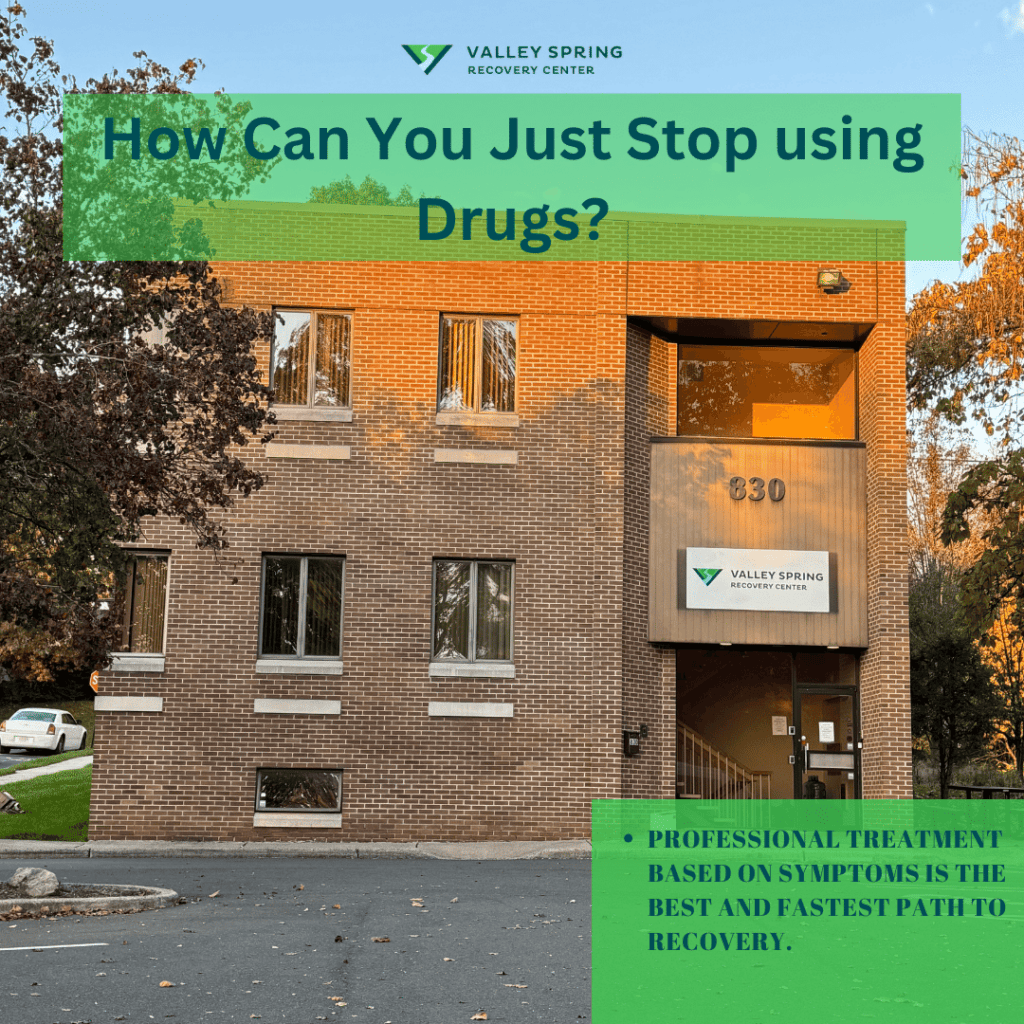
How can you stop if you have a drug problem?
Simply stopping drug use when you have a drug problem is generally not recommended without medical supervision, as it can lead to severe withdrawal symptoms and potential health risks. Abrupt cessation can exacerbate underlying issues and may increase the risk of complications such as seizures, hallucinations, or other life-threatening conditions.
Ben Fisher
All author postsShare This Post

